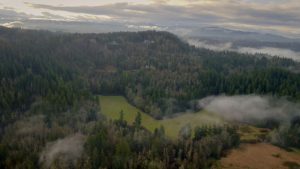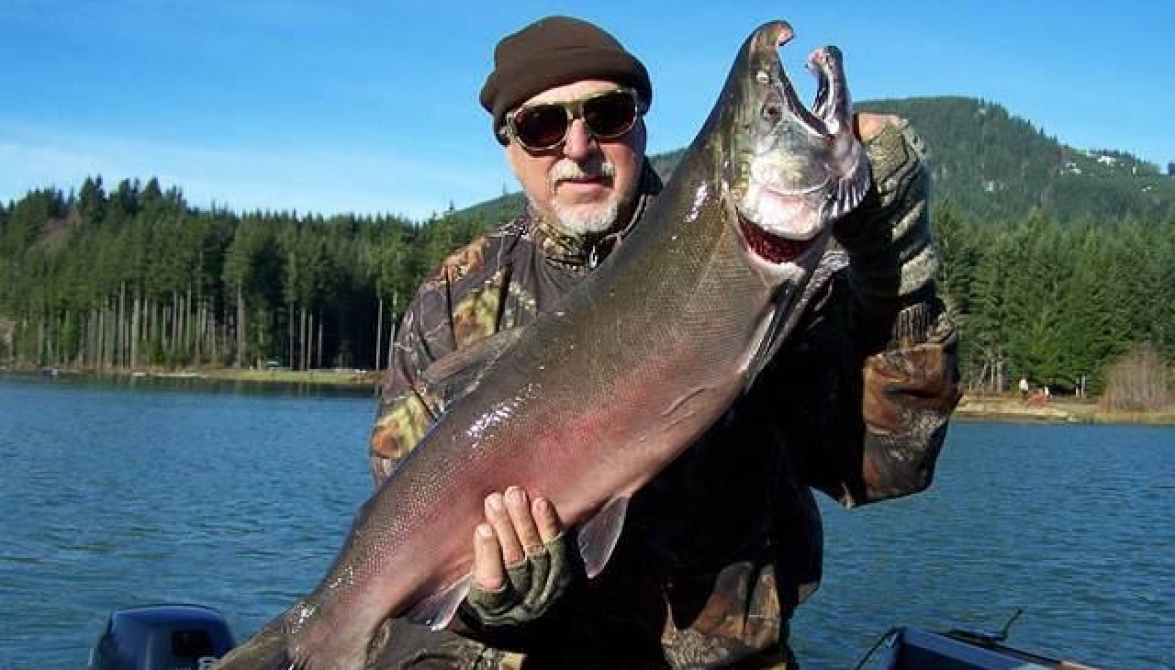Why Recover Salmon?
![]()
Recovering salmon is important because Washingtonians rely on healthy populations of salmon to support a robust economy, feed iconic orcas, enrich a cultural heritage and way of life, and fulfill obligations to Tribes.
In addition, the Endangered Species Act requires the federal government to protect animals that are in danger of extinction or likely to become so. Since 1991, the federal government has declared fourteen species of salmon and steelhead in Washington State as at risk of extinction.
What's at Stake
Economy and Recreation
![]() Salmon contribute directly and indirectly to the economy. An estimated $1.5 billion is spent annually by people harvesting fish and shellfish recreationally in Washington,1 supporting many rural families and businesses. This results in nearly twenty-three thousand jobs in Washington with salmon harvest alone worth almost $14 million a year.2 In addition, every $1 million invested in habitat restoration projects generates up to $2.6 million in economic activity.3
Salmon contribute directly and indirectly to the economy. An estimated $1.5 billion is spent annually by people harvesting fish and shellfish recreationally in Washington,1 supporting many rural families and businesses. This results in nearly twenty-three thousand jobs in Washington with salmon harvest alone worth almost $14 million a year.2 In addition, every $1 million invested in habitat restoration projects generates up to $2.6 million in economic activity.3
Environment
As keystone species, salmon reflect the health of the environment. Scientists estimate 138 species of wildlife, from whales to insects, depend on salmon for their food.4 Salmon not only feed other species, they also support ecological processes, moving energy and nutrients between the ocean, estuaries, and freshwater as they move to the ocean to grow and return to rivers to spawn.
Culture and Way of Life
Salmon are an icon of the Pacific Northwest. Residents gather by the thousands annually at festivals throughout the state to welcome salmon home from the ocean. Salmon have long been a part of many family fishing traditions and fishing businesses and area a part of Washington’s identity and way of life.

Tribal Rights and Co-Management
![]()
From the earliest times, people of the Northwest have identified themselves with salmon. Tribes, the state’s first inhabitants, defined themselves as the Salmon People.5 Salmon are woven throughout Tribal lives as a source of food, work, art and literature, heritage, and celebration.
Through treaties with the federal government in the mid 1850s, many Tribes exchanged land for guaranteed, perpetual access to fishing areas. Other Tribes in Washington never ceded their claims to ancestral lands but still rely on salmon. Washington State is obligated to uphold fishing rights for Tribes and has a duty to ensure salmon are abundant enough for harvest. Tribes co-manage the state’s salmon with the Washington Department of Fish and Wildlife and work with the federal government to set fishing seasons.
Tribes are foundational for salmon recovery in Washington. Tribes have thousands of years of knowledge, expertise, and insight into salmon stewardship. They have led salmon recovery efforts throughout the state, serve on salmon recovery boards, and work with partners to advance recovery priorities. Tribes have led many of the largest restoration efforts in the state. And Tribes employ a range of scientists and policy staff who advocate for salmon recovery, lead planning and implementation efforts, and monitor progress toward recovery.
Scientists estimate 138 species of wildlife, from whales to insects, depend on salmon for their food.
Videos
Salmon’s Agreement
This short film from indigenous perspectives shows how salmon keep their agreement to us and the environment, giving up their lives to spawn again and again. Watch the Video.
South Prairie Restoration Project

This video showcases the restoration of South Prairie Creek in Pierce County and discusses the value of salmon restoration for the salmon themselves and for people. Watch the video.
1Mojica, J., and Fletcher, A., 2020. Economic Analysis of Outdoor Recreation in Washington State, 2020 Update. Earth Economics. Tacoma, WA.
2National Marine Fisheries Service. (2022). Fisheries Economics of the United States, 2019. U.S. Dept. of Commerce, NOAA Tech. Memo. NMFS-F/SPO-229A, 236 p.
3Nielsen-Pincus, M., and Moseley, C., 2010. Ecosystem Workforce Program Briefing Paper 24: The Economic and Employment Impacts of Forest and Watershed Restoration in Oregon. University of Oregon Institute for Sustainable Environment, Eugene, OR. 11 p.
4Cederholm, C.J., Johnson, D.H., Bilby, R.E., Dominguez, L.G., Garrett, A.M., Graeber, W.H., Greda, E.L., Kunze, M.D., Marcot, B.G., Palmisano, J.F., Plotnikoff, R.W., Pearcy, W.G., Simenstad, C.A., and Trotter, P.C. (2000). Pacific Salmon and Wildlife–Ecological Contexts, Relationships, and Implications for Management. Special Edition Technical Report, Prepared for D. H. Johnson and T. A. O’Neil (managing directors), Wildlife-Habitat Relationships in Oregon and Washington. Washington Department of Fish and Wildlife, Olympia, WA.
5Smithsonian National Museum of the American Indian, Native Knowledge 360º, Pacific Coast Region, https://americanindian.si.edu/nk360/pnw-history-culture-regions/pacific-coast#:~:text=Native%20Nations%20of%20the%20Pacific,salmon’s%20sacrifice%20in%20special%20ceremonies, accessed on March 14, 2025.
The photograph of a juvenile coho salmon was taken by John R. McMillan of the National Oceanic and Atmospheric Administration’s Northwest Fisheries Science Center. The photograph of the man catching a fish in a net is courtesy of the U.S. Fish and Wildlife Service. The photograph of the man with a large fish (a coho salmon from the Cowlitz River) was taken by James Powell, courtesy of the Washington Department of Fish and Wildlife. The photograph of an orca eating a salmon is courtesy of the National Oceanic and Atmospheric Administration. The photograph of the person holding a salmon on a stick was taken by Gary Sims of the Lummi Nation’s First Salmon Ceremony.





